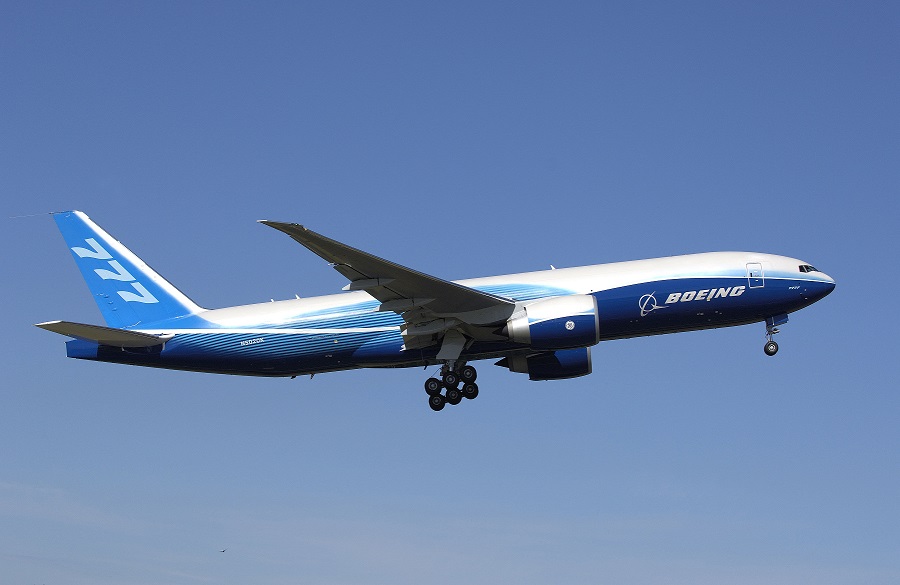There is the potential of an undersupply of large widebody freighters in the second half of the decade, according to Boeing vice president of commercial marketing Darren Hulst.
Speaking at the Tiaca Air Cargo Forum and following the release the latest Boeing market forecast, Hulst gave an overview of how he saw the supply side of the freighter market progressing over the coming years.
He was expecting the narrowbody and medium widebody sector to remain fairly balanced but identified a potential shortage for large widebodies.
Hulst explained that on the demand side, cargo volume growth had surged in the large widebody market. Meanwhile on the supply side, the industry is in a transition period as new freighter models are in the process of being launched – the Boeing 777-8F and Airbus A350F.
In the meantime, the only production widebody aircraft available is the 777F. Other contacts have also pointed out that the 777 conversion programmes that have been announced are yet to receive their STCs and even when they do it could take some time before they hit the market in large numbers.
This transition period could explain a recent resurgence in 777F orders this year as carriers look to fill the gap.
“The large end of the market is where the biggest potential undersupply is,” Hulst said. “A year ago, the phone wasn’t ringing much for 777 freighters because we had string of really good years after the pandemic and everybody took a breather with all the capacity that entered the market.
“And then we have seen a year and a half of sustained growth in the general cargo long haul market and this year there have been 34 orders and rising for the 777 freighter, which means that we will probably see an under supply in the large freighter market for the back half of the decade.
“The reason for that is we are transitioning from the metal wing (777F) to the 777-8 freighter, while Airbus is also going to bring a freighter [A350F] to market.
“But in the medium term there is not a lot of availability in terms of the skyline so I think that is one part of the market that you might say is under supplied.”
On the narrowbody market, Hulst said that there was a surge in conversions during the pandemic but since then, aircraft lessors and operators were holding onto aircraft for passenger operations due to rising demand. This has caused a slowdown in conversions due to a lack of feedstock.
These two factors had counteracted each other to balance out the market, he explained.
Hulst added that the medium widebody market also appeared to be well balanced.
He pointed out that Boeing had recently announced plans to end production of the 767 freighter in 2027, which showed that demand for that segment had slowed.
“The medium widebody market is interesting because you have a combination of dedicated freighters and converted freighters entering the market, especially on the 767 side… I know there is A330s in the market as well… and in that sense we are pretty balanced.
“If we weren’t, we would probably be building the 767 for longer but we are pretty balanced with the demand there so there isn’t an over or undersupply in the market.”
Elsewhere, Boeing’s latest market forecast suggested the balance between freighter and bellyhold capacity would favour freighters over the coming years.
Boeing projections show that it expects 55% of volumes to be carried by freighters and 45% in bellies.
Pre-Covid, the split had been closer to 50% – although it had risen as high as 70% in favour of all-cargo aircraft during the pandemic due to the widespread cancellation of passenger operations.
He said that the extra freighter marketshare now expected compared with pre-pandemic levels is in part down to the slow restart of passenger operations between China and the US.
Meanwhile, passenger operations also couldn’t necessarily cater to certain cargo markets due to limited passenger demand.
In the latest forecast, the all-cargo fleet is predicted to rise to 3,900 freighters by 2043, an approximate 66% increase from 2,340 cargo aircraft in 2023.
This addition of 2,845 freighters over the next 20 years includes 1,005 production freighters and 1,840 passenger to freighter (P2F) conversion aircraft.
The aircraft manufacturer said that nearly half of production and conversion deliveries will replace older freighters, noting that many older aircraft remain in operation due to recent market needs.
Boeing also predicted that the large widebody freighter fleet will nearly double, driven by demand in high-growth Asian markets.
While the projection is an increase on its forecast of two years ago, it is not as high as many would have expected given the sudden surge in e-commerce demand over the past year.
However, Hulst pointed out that newer freighters would be more efficient and reliable, which would help boost overall market capacity without necessarily boosting aircraft numbers.
“The outlook is almost the same in terms of total aircraft and so it looks like nothing has changed,” he said.
He added: “We see new aircraft providing higher utilisation and better productivity which will offset the number of aircraft slightly.
“We have looked at each of the flows and each of the products and really gone into detail about how those aircraft will provide the capacity.”
The post Boeing: Potential under supply in widebody freighters over coming years appeared first on Air Cargo News.



